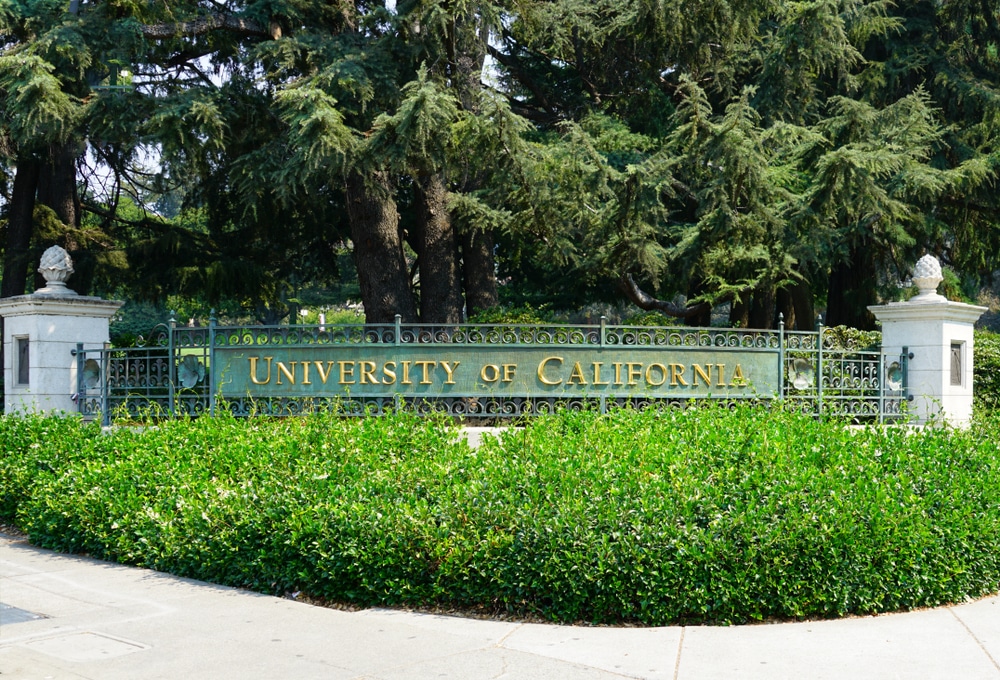Berkeley’s Endowment: A Comprehensive Overview
Steeped in a rich history and renowned for its significant contributions to academia, the Berkeley Endowment is an essential component of the University of California, Berkeley. This detailed article delves into the intricacies of the Endowment, uncovering its significance, management, financial performance, beneficiaries, and the challenges it currently faces.
Understanding the Berkeley Endowment
The Purpose and Importance of the Endowment
Berkeley’s endowment, with a primary objective to secure the university’s long-term financial security, serves as a backbone to the university’s extensive operations. It alleviates the institution’s reliance on unstable funding sources, like public funding and tuition fees, smoothing financial uncertainties.
But what does it mean for the university to have a secure financial future? It means that Berkeley can continue to invest in cutting-edge research, attract top-notch faculty, and provide scholarships and financial aid to deserving students. The university can maintain state-of-the-art facilities and support innovative programs that benefit the campus community and society.
Beyond shaping the university’s financial structure, the Endowment fortifies Berkeley’s mission to serve society through its extensive research work, public service, and teaching. Providing a steady flow of funding ensures the continuity of these fundamental undertakings.
Imagine a world without the Berkeley Endowment. The university would be at the mercy of fluctuating economic conditions, struggling to maintain its high standards of education and research. The endowment, therefore, plays a crucial role in preserving the legacy and impact of Berkeley for generations to come.
The History of Berkeley’s Endowment
Having its roots entrenched in the conception of the university itself, Berkeley’s endowment has evolved enormously over the years, shaping and being shaped by the institution’s journey. It was fueled originally by philanthropic donations and has now burgeoned into a financial titan.
As Berkeley was established, visionary individuals recognized the importance of creating a sustainable financial base to support its mission. Inspired by the university’s commitment to excellence, philanthropists generously donated funds to establish the initial endowment. Private contributions were the primary source of funding for the first half-century. “Builders of Berkeley” refers to the private citizens who contributed to establishing and maintaining the educational institution.
Over time, the endowment grew steadily, thanks to the university’s careful management and strategic investments. It weathered economic storms, such as the Great Depression and recessions, with resilience and determination. The endowment’s ability to adapt and thrive in challenging times is a testament to the university’s foresight and dedication to its mission.
Today, Berkeley’s endowment stands as a testament to the power of long-term thinking and strategic financial planning. It has become a significant force in supporting the university’s operations and ensuring its continued success.
But the endowment is not just about numbers on a balance sheet. It represents the collective efforts of countless individuals who believe in the transformative power of education. It symbolizes the commitment of alumni, donors, and supporters who have contributed to the growth and prosperity of Berkeley.
As we look to the future, the Berkeley Endowment will play a vital role in shaping the university’s destiny. It will provide the resources needed to tackle pressing societal challenges, foster innovation, and empower the next generation of leaders. The Endowment is not just an asset but a catalyst for positive change.
How Berkeley’s Endowment is Managed
Governance Structure and Decision-Making
Managing the Berkeley Endowment requires a well-structured governance system and a thoughtful decision-making process. To ensure effective management, specific teams and committees are appointed to oversee different aspects of the Endowment.
The Berkeley Endowment Management Company is responsible for managing most of the endowment funds invested through the UC Berkeley Foundation. The UC Investment Team is in charge of managing the funds that fall under the purview of the UC Regents.
The decision-making process within the Berkeley Endowment involves intensive deliberations and analysis. Expert analysts closely monitor market trends, economic indicators, and the institution’s financial needs. By combining their knowledge and expertise, they shape the Endowment’s growth trajectory and make informed investment decisions.
Investment Strategies and Asset Allocation
Berkeley adopts a diversified approach to investments, recognizing the importance of spreading risks and maximizing returns. The endowment’s investment portfolio is carefully structured to include a broad range of assets, such as equities, bonds, real estate, and more.
This diversified investment strategy provides several benefits. Firstly, it helps mitigate risks by reducing the reliance on a single asset class. The Endowment is better positioned to weather market fluctuations and potential downturns by spreading investments across various sectors and industries. Secondly, diversification enhances return prospects. Different asset classes have unique risk-return profiles, and by combining them strategically, the Endowment aims to optimize its overall performance.
Asset allocation is a critical component of the Berkeley endowment’s investment strategy. The allocation of assets is not arbitrary but based on careful analysis of various factors. Market conditions, the institution’s projected financial needs, and the endowment’s long-term goals are all taken into consideration when determining the optimal allocation of resources. This thoughtful approach ensures that the endowment’s investments are aligned with its objectives and have the potential to generate sustainable growth.
Overall, the management of Berkeley’s endowment involves a well-structured governance structure, informed decision-making processes, and a diversified investment strategy. By leveraging the expertise of committees and teams and carefully analyzing market trends and financial needs, the endowment aims to maximize returns while managing risks. The thoughtful allocation of assets further contributes to the endowment’s long-term growth and sustainability.
Financial Performance of the Berkeley Endowment
Annual Returns and Growth Over Time
Berkeley’s endowment has been marked by steady growth and robust returns. The diversified portfolio and robust investment strategies have fostered a sound financial standing for the endowment. For the financial year concluding on June 30, 2022, the endowment’s total value stood at $6.9 billion. During the 2021-2022, the campus received a total distribution of $184 million from the endowment.
One of the key factors contributing to the consistent growth of the Berkeley Endowment is its prudent asset allocation. The endowment’s investment team carefully selects a mix of asset classes, including equities, fixed income, real estate, and alternative investments. This diversified approach helps to mitigate risks and capture opportunities across different market conditions.
In addition to asset allocation, the endowment’s investment strategies play a crucial role in driving its financial performance. The investment team employs active and passive investment strategies, leveraging the expertise of internal and external investment managers. This approach allows the endowment to benefit from the market’s upside potential while managing downside risks.
Furthermore, the Berkeley endowment’s commitment to long-term investing has been instrumental in achieving consistent growth. By taking a patient and disciplined approach, the endowment avoids making impulsive investment decisions based on short-term market fluctuations. Instead, it focuses on identifying high-quality investment opportunities that align with its long-term objectives.
The annual returns lived up to expectations more often than not, injecting further financial stability into the Berkeley academic and research ecosystem.
Impact of Economic Fluctuations
Economic shifts can wind up influencing the endowment’s performance. Recessions may dwindle returns and sour investment prospects, while boom phases can stimulate growth and returns.
Berkeley’s investment team implements proactive measures to safeguard its portfolio during economic downturns. These measures may include adjusting the asset allocation to reduce exposure to volatile asset classes, increasing diversification within each asset class, and actively managing risk through hedging strategies. By taking these precautions, the endowment aims to minimize the impact of economic fluctuations on its financial performance.
Despite this, the Berkeley endowment has shown remarkable resilience against economic adjournments, thanks to its well-articulated investment strategies and rigorous governance.
In times of economic prosperity, Berkeley’s endowment capitalizes on favorable market conditions to generate attractive returns. The investment team actively seeks opportunities that align with the endowment’s long-term objectives and have the potential for significant growth. By leveraging its extensive network and expertise, the endowment identifies promising ventures in various sectors, such as technology, healthcare, and sustainable energy, to maximize returns during boom phases.
Moreover, the Berkeley endowment’s rigorous governance structure ensures that investment decisions are made in the best interest of the endowment’s beneficiaries. The endowment follows a comprehensive due diligence process, conducting thorough research and analysis before committing capital to any investment opportunity. This disciplined approach helps to mitigate risks and enhance the probability of achieving favorable financial outcomes.
Beneficiaries of the Berkeley Endowment
Funding for Scholarships and Fellowships
The contributions of Berkeley’s endowment have been cardinal to facilitating numerous scholarships and fellowships. Augmenting educational accessibility has empowered countless students to shape their futures at Berkeley, making higher education attainable for many.
Through the Berkeley Endowment, deserving students from diverse backgrounds have been able to pursue their academic aspirations without the burden of financial constraints. Students have been awarded scholarships and fellowships based on their academic achievements, leadership potential, and financial need. These financial aids have provided opportunities for students to attend Berkeley and allowed them to focus on their studies and engage in extracurricular activities that enhance their overall college experience.
Moreover, Berkeley’s endowment has established special scholarship programs targeting underrepresented communities, ensuring that students from all walks of life have equal access to quality education. These programs aim to bridge the opportunity gap and promote diversity and inclusion within the university community.
Support for Research and Faculty Positions
Besides aiding students, the Berkeley Endowment also foments research operations and faculty positions. This continual funding has been instrumental in fostering cutting-edge research and attracting talented faculty to the university, bolstering its academic reputation.
The UC Berkeley Endowment has played a pivotal role in advancing research across various disciplines. By providing financial support for research projects, the endowment has enabled faculty members and students to delve deeper into their areas of expertise, uncovering new knowledge and pushing the boundaries of innovation. This research funding has resulted in groundbreaking discoveries, publications, and patents that have contributed to the academic community and significantly impacted society at large.
In addition to research support, Berkeley’s endowment has also facilitated the creation of new faculty positions. By endowing chairs and professorships, the university has been able to attract distinguished scholars and experts in their fields. These esteemed faculty members bring a wealth of knowledge and experience, enriching the learning environment and inspiring students to reach their full potential.
Furthermore, Berkeley’s endowment has established programs to support early-career faculty members, providing them with the necessary resources and mentorship to thrive in their academic careers. This investment in faculty development ensures a vibrant and dynamic academic community that fosters innovation and excellence.
Overall, the UC Berkeley Endowment’s support for research and faculty positions has not only elevated the university’s academic standing but has also contributed to advancing knowledge and cultivating future leaders in various fields.
Challenges and Criticisms of the Berkeley Endowment
The Berkeley Endowment, with its vast financial resources, has not been immune to controversies and criticisms. While it serves as a crucial source of funding for the university, it has faced its fair share of challenges and debates.
Controversies Surrounding Fund Allocation
One of the major areas of contention revolves around the allocation of funds within Berkeley’s endowment. Critics argue that certain departments and programs receive a disproportionately large share of the endowment’s resources while others are left struggling to secure adequate funding. This has sparked debates about the fairness and equity of the distribution process.
Furthermore, there have been instances where the endowment’s funds were used to support projects or initiatives that sparked public outcry. These controversies have raised questions about the transparency and accountability of the endowment’s decision-making processes.
Questions about Investment Sources and Practices
Another area of criticism revolves around the sources and practices of the Berkeley Endowment’s investments. Some argue that the endowment should prioritize socially responsible investments, ensuring that its financial activities align with the university’s values and mission.
Additionally, there have been concerns raised about the environmental impact of certain investments made by the endowment. Activists and students have called for greater transparency and a more comprehensive approach to sustainable investing.
Complexity of Managing a Massive Endowment
Managing a massive endowment like Berkeley’s is no small feat. The sheer scale and complexity of the financial operations invite disagreements and challenges. Balancing the diverse needs and priorities of various departments, programs, and initiatives requires careful navigation and decision-making.
Moreover, the volatility of financial markets and the ever-changing landscape of investments pose ongoing challenges for the endowment’s management team. They must constantly adapt and strategize to ensure the long-term growth and stability of the endowment.
Future Prospects and Plans for Improvement
Despite the challenges and criticisms the UC Berkeley Endowment faces, the future looks promising. The authorities responsible for managing the endowment are committed to addressing these issues and improving its overall functioning.
They constantly explore new avenues and practices to optimize the allocation of funds, seeking to create a more equitable distribution system. They aim to gather diverse perspectives and ensure that the endowment serves the entire Berkeley community by engaging in open dialogues with stakeholders, including faculty, students, and alumni.
Furthermore, the management team is actively working towards enhancing transparency and accountability. They are implementing measures to provide clearer insights into the endowment’s decision-making processes and investment practices. This increased transparency will help build trust and alleviate concerns regarding the endowment’s operations.
Commitment to Academic Excellence
Berkeley’s endowment, with its rich history, profound impact, and immense potential, remains a testament to Berkeley’s unwavering commitment to fostering academic excellence and societal impact. It serves as a vital resource that enables the university to attract top faculty, support groundbreaking research, and provide scholarships to deserving students.
As Berkeley continues its journey toward academic excellence, the Berkeley Endowment will play a pivotal role in shaping its future. With ongoing efforts to address challenges, incorporate diverse perspectives, and improve transparency, the endowment is poised to make an even greater impact in the years to come.
In conclusion, the UC Berkeley Endowment’s path is not without obstacles, but its commitment to growth and improvement remains steadfast. By addressing controversies, refining investment practices, and embracing transparency, the endowment aims better to serve the university and the broader Berkeley community.
If you need help putting the finishing touches on your college applications, at AdmissionSight, we have over 10 years of experience guiding students through the competitive admissions process.
AdmissionSight can help you put your best foot forward when applying to college this fall. Contact us today for more information on our services.








































